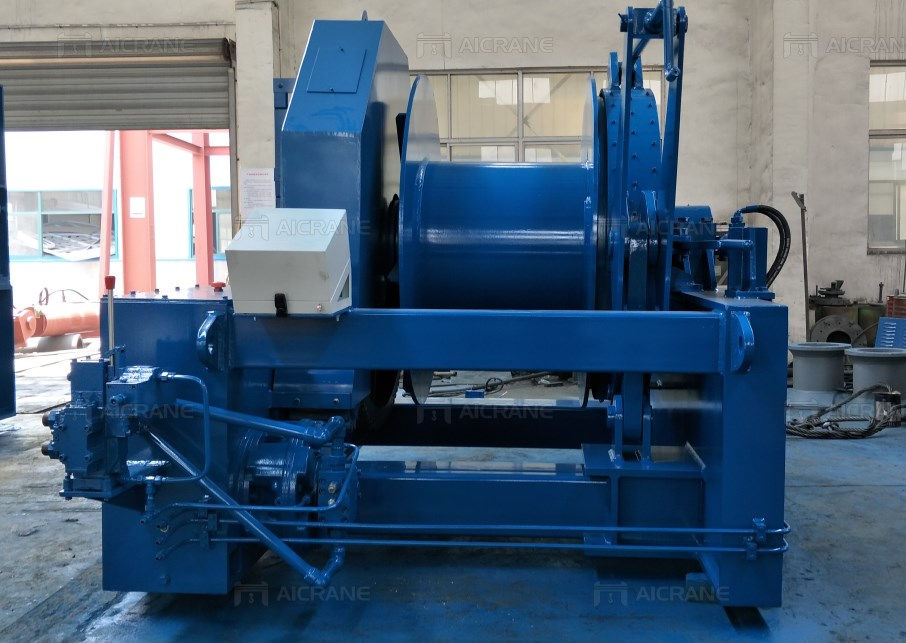Exploring Control Options for 50-Ton Electric and Hydraulic Winches
- charlespsnow
- Jun 4, 2023
- 2 min read
Winches play a vital role in various industries, including construction, maritime, and mining, where heavy lifting and pulling operations are common. When it comes to high-capacity winches, such as 50-ton electric and hydraulic winches, the choice of control mechanisms becomes crucial. In this article, we will explore different control options available for 50-ton electric and hydraulic winches, highlighting their features, advantages, and applications.

Electric Winch Controls
Electric winches offer precise control and reliable performance. Let's delve into some popular control options:
Manual Control
Manual control is a simple and straightforward method of operating electric winches. It typically involves using buttons or switches located on the winch control panel. Operators manually activate the winch by pressing the appropriate buttons to initiate the lifting, pulling, or releasing actions.
Advantages:
Easy to use and understand.
Suitable for basic applications where manual control is sufficient.
Cost-effective option compared to more advanced control systems.
Applications:
Small-scale lifting and pulling operations.
Personal use, such as recreational activities or small workshops.
Remote Control
Remote control systems provide operators with the flexibility to control the winch from a distance. These systems incorporate handheld remote controllers with buttons or joysticks to initiate winch actions remotely.
Advantages:
Increased operator convenience and mobility.
Improved safety by allowing operators to maintain a safe distance from the winch during operation.
Suitable for applications where precise control is required, such as positioning or alignment tasks.
Applications:
Construction sites where operators need to control winches from different locations.
Offshore operations, including shipyards and oil platforms.
Recovery and towing operations.
Programmable Logic Controllers (PLCs)
PLCs offer advanced automation and control capabilities for electric winches. These computer-based control systems can be programmed to execute complex sequences of winch actions automatically.
Advantages:
Precise and programmable control of winch operations.
Automation of repetitive tasks, improving efficiency and reducing human error.
Integration with other systems for seamless coordination.
Applications:
Industrial and manufacturing environments, where winches are part of larger automated systems.
Complex lifting and pulling operations requiring precise control and synchronization.
Hydraulic Winch Controls
Hydraulic winches are known for their high power and robust performance. Let's explore the control options available for 50-ton hydraulic winches:
Manual Control
Similar to electric winches, hydraulic winches can also be operated manually using control valves or levers. Operators control the flow of hydraulic fluid to control the winch actions.
Advantages:
Simple and intuitive operation.
Well-suited for rugged environments and applications where electrical power may not be readily available.
Applications:
Off-road vehicles and heavy-duty machinery, such as forestry equipment and mining machinery.
Construction sites where hydraulic systems are commonly used.
Remote Control
Remote control systems are also applicable to hydraulic winches, offering operators the flexibility to control winch actions from a distance.
Advantages:
Operator convenience and safety, allowing control from a safe location.
Precise control over winch operations.
Suitable for applications where manual operation is not feasible or safe.
Applications:
Marine and offshore operations, such as shipyards, fishing vessels, and oil platforms.
Recovery and towing operations in challenging or hazardous environments.
Conclusion
The choice of control mechanisms for 50-ton electric and hydraulic winches depends on the specific requirements and operational conditions. Whether it's manual control for simple tasks, remote control for enhanced operator convenience and safety, or advanced programmable logic controllers for automation and integration, each control option brings unique benefits to winch operations. By selecting the appropriate control system, operators can ensure precise, efficient, and safe handling of heavy loads in various industries and applications.










Comments